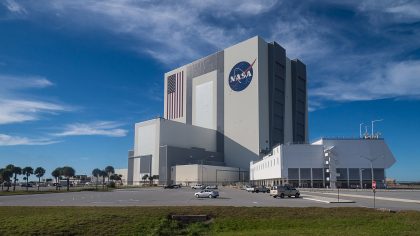Energy News and Stories This Week: Nov. 26th – Dec. 2nd
Energy is the bedrock of modern existence. It influences world economies and family budgets alike. Given its societal significance, we publish a weekly compendium of energy news and stories that are shaping global markets and affecting daily life.
Mississippi State Installing Trigeneration Microgrid
Mississippi State University is adding on to its new College View student residential-retail building to build a trigeneration microgrid – meaning a combined cooling, heating and power. The microgrid will combine natural-gas fired combine heat and power (CHP) system with a centralized chilling and heating system – this is a switch from more decentralized hot water heating and cooling systems helping reduce operating costs. The overall electrical power generation capacity is proposed at 285 kW. This is not the only transformation the university has made, a lighting retrofit project for example is also saving the school an average of $1 million a year in energy maintenance costs – overall the university has saved $55 million thanks to energy-efficiency and sustainability efforts.
The U.S. Natural Gas Coalition Reports Above-Target Methane Reductions
A recent report shows that natural gas exploration companies and pipeline operators have already reached their 2025 goal to reduce gas emissions – surpassing the 1% methane intensity number. As the natural gas industry continues to grow and help meet the growing energy needs of the United States, the reductions stand as a major win for the coalition looking to prove they can do so in an environmentally sustainable way. Many companies have been able to meet emission goals thanks to cutting-edge technology and upgrading and replacing necessary pipeline infrastructure.

New App Hopes to Cut U.S. Carbon Footprint
A new app, “Cowlines”, offers users across 62 cities in the United States and Canada the opportunity to choose the fastest, cheapest and greenest routes to their destinations. Among the city-centers are Los Angeles, Portland, New York City, Toronto, and Seattle. This free app combines public transit, ride-share, bike-share, car-share and taxis into one customized route – alleviating congestion in urban centers. In addition to personalized routes, Cowlines also notes the total cost of the trip, how long it takes to get there and calculate their carbon footprint calculating the greenhouse gas emissions based on the route.

The Kennedy Space Center Introduces Solar Energy to Visitor Complex
Solar trees are headed to the Kennedy Space Center Visitor Complex in partnership with Florida Power and Light’s SolarNow program. A solar tree looks a lot like one may think – a tree – offering visitors the opportunity to come in direct contact with solar energy and educate guests on the technology. The five solar trees at the visitor complex will have a total of 60 solar panels, which will help power community parks, zoos and museums.
Tiny Homes in Silicon Valley’s Backyard
Tiny homes have been a popular alternative to traditional houses as well as a potential solution to house the homeless – now, it seems tiny homes may be an option for Silicon Valley in California, with many needing a more affordable and efficient housing solution. The first models are an average of 625 square feet costing almost $300,000 – almost $30,000 more than the average American home sale price based on census data. Yet, in an area where apartments can run families $4,000 a month. Designer Béhar hopes to build another model using robotic manufacturing that could retail for less than $100,000. Buyers are able to tailor their homes as they please both interior and exterior including options for solar panels, insulation, wood paneling and more.

